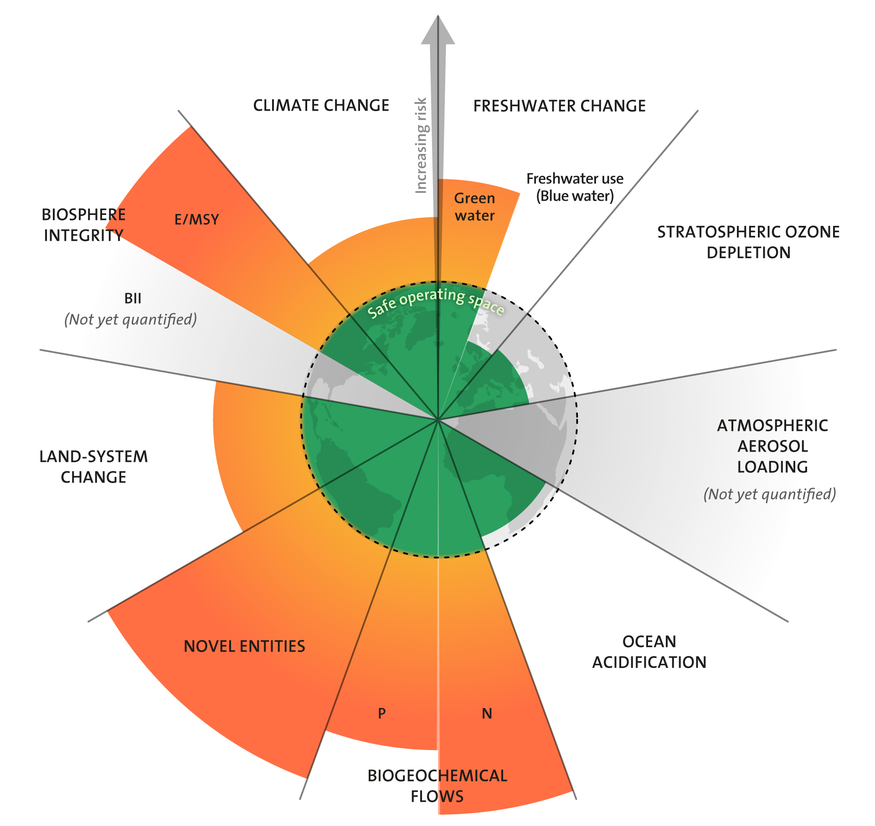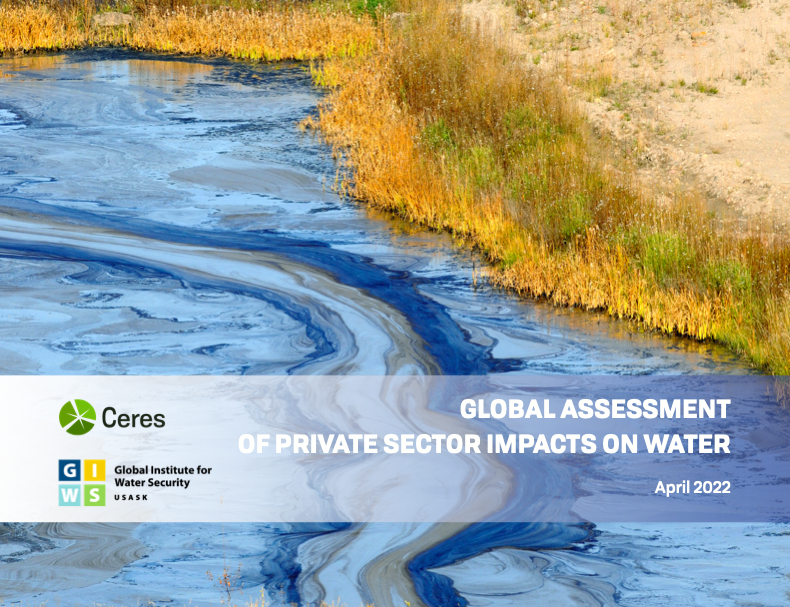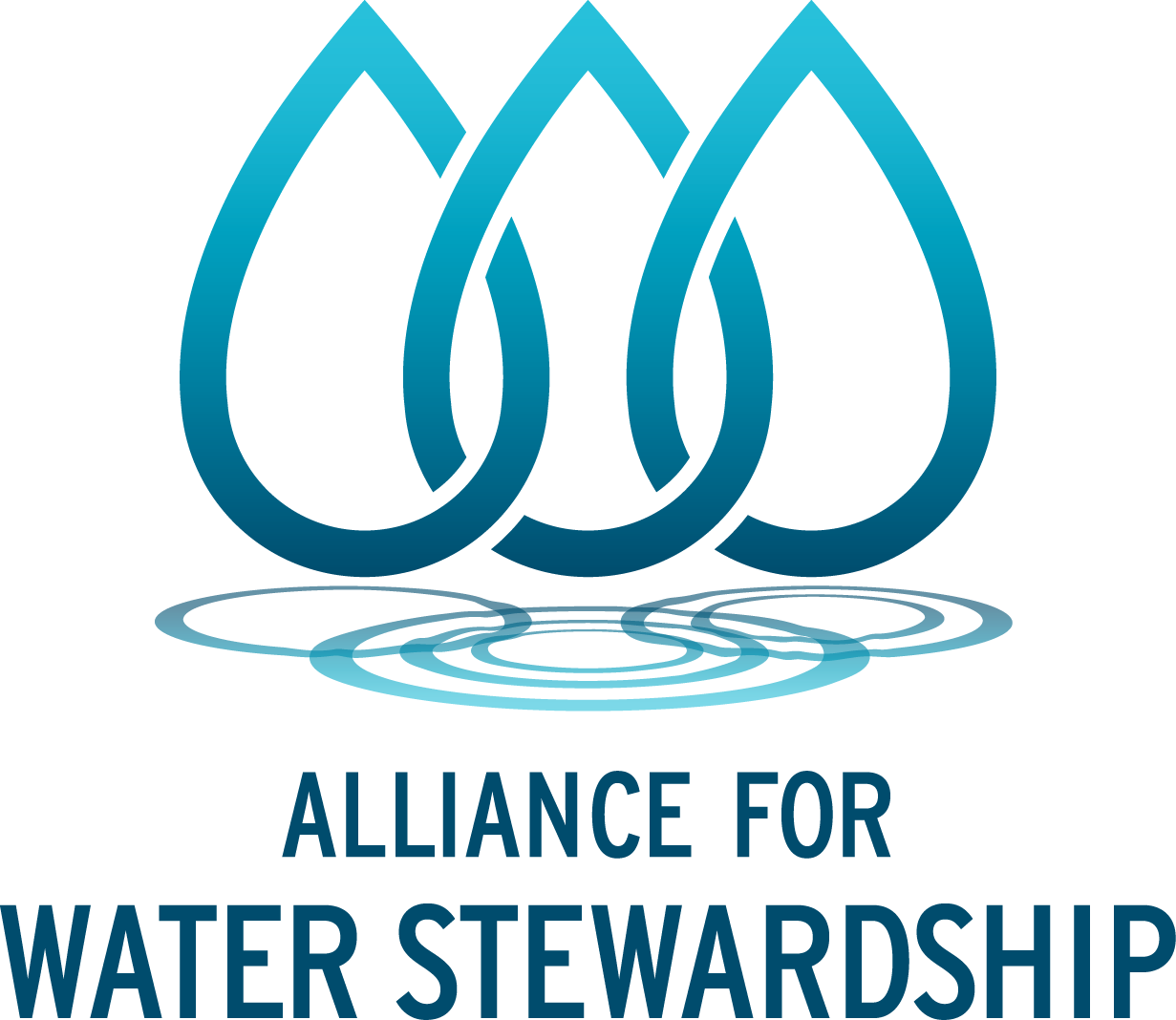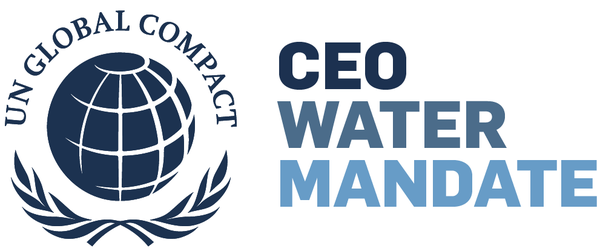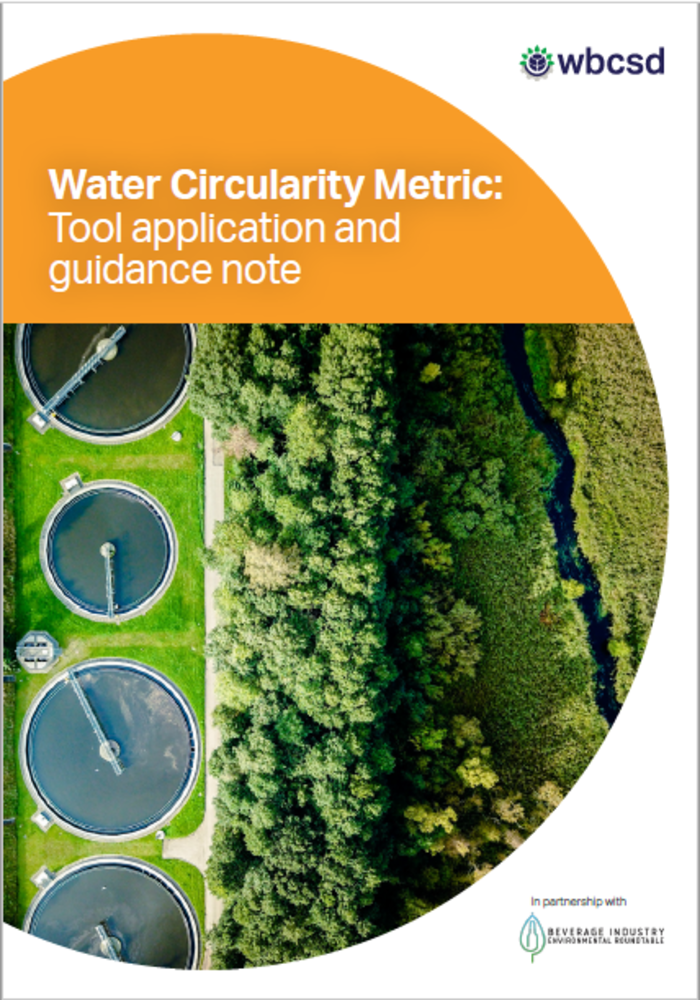General Resources
Description
Introductory resources and reference materials to help acquaint you with the issues related to water.
Share this Subissue on:LinkedIn
Resources
Understanding Water
Freshwater boundary exceeds safe limits
This article from the Stockholm Resilience Centre can help bring you up to speed on the global status of freshwater change. It explains that the freshwater planetary boundary now exceeds safe limits, due to the inclusion of "green water" - the water available to plants - for the first time; it also unpacks this concept of green water.
State of Global Water Resources
This report is the World Meteorological Association’s annual stocktake on how global freshwater availability is being affected by our changing climate. It provides an overview of trends and major events related to river discharge, reservoirs, groundwater levels, high-impact hydrological events (such as floods and droughts), and highlights hotspots for changes in freshwater storage, including the crucial role and vulnerability of snow and ice. These insights will be most useful to strategic planning and risks teams as well as others involved in horizon scanning or scenario analysis.
Water Risk Filter
The Water Risk Filter uses 32 annually-updated, peer reviewed data layers alongside a risk questionnaire to help you explore, understand, prioritise, and respond to water risks at specific sites. It is designed to be easy to use by non-water experts, and is the only water risk tool to assess both basin and operational risks. The filter is also aligned with leading water stewardship frameworks, as well as the UN Sustainable Development Goals. The Water Risk Filter also now applies TCFD-linked scenarios, which will help you to understand how water risks may evolve over time.
WWF Guidance Note: "Net Positive Water"
Although the concept of “net positive water” may seem appealing as a simple, universal water metric, much in the way that "net zero carbon" appeals to sustainability professionals and advocates, the reality is that the framing and pursuit of "net positive water" can do more harm than good. This guidance note from the World Wildlife Fund unpacks the concept of net positive water; explains some of the benefits and drawbacks of "net positive" framing with respect to water; and provides recommendations for companies looking to measure consumption, make commitments, and set targets.
The Global Assessment of Private Sector Impacts on Water
This comprehensive report from Ceres is a good resource for any change agent or business leader who wants to understand how industry practices are driving critical threats to global freshwater systems. It explains how industry at large is affecting freshwater resources and how, in turn, business is being impacted; the specific impacts on water from different business sectors; critical and emergent impacts and threats to global water systems; and strategies to mitigating them.
Understanding Corporate Responsibility on Water
The Alliance for Water Stewardship Standard
The Alliance for Water Stewardship (AWS) Standard will help you to understand your water use and impacts, and to work collaboratively and transparently for sustainable water management within a catchment context. The standard has five steps: 1) gather and understand, 2) commit and plan, 3) implement, 4) evaluate, and 5) communicate and disclose. The AWS also provides a certification process.
In addition to the Standard, the AWS has produced comprehensive guidance to support persons responsible for implementing the Standard within their organization.
An Introduction to the Alliance for Water Stewardship Standard and Standard System
This free online training module from the Alliance for Water Stewardship (AWS) can help you better understand water stewardship and the AWS Standard. The module has three sections, wherein it introduces the concept of water stewardship, explains the AWS standard, and explains how to implement it. The resource will be most useful to sustainability practitioners interested in implementing the AWS standard or simply updating their water stewardship knowledge.
Advancing Water Stewardship Through Supplier Collaboration
This guide, created in collaboration with WWF and AstraZeneca, can help you to advance credible water action by addressing material impacts on water across your full value chain. The guide identifies potential pathways for cooperation with suppliers, and groups them into five categories: operational enhancements, financial activation, advocacy engagement, industry alignment, and procurement incentivisation. Each pathway includes specific actions to engage suppliers and explains their potential benefits. This practical resource will be most useful to supply chain management and sustainability professionals.
CEO Water Mandate
The CEO Water Mandate is a commitment platform for business leaders and learners to advance water stewardship, in partnership with the United Nations, governments, civil society, and other stakeholders. The Mandate develops tools and resources, convenes stakeholders, and facilitates partnerships and collective actions that improve conditions in at-risk water systems around the world.
The Mandate is now endorsed by over 240 companies from a range of industry sectors and regions around the world. Endorsing companies commit to action across six key elements and report annually on progress on 1) direct operations, 2) supply chain and watershed management, 3) collective action, 4) public policy, 5) community engagement, and 6) transparency. These companies also commit to identifying and reducing critical water risks to their businesses; seizing water-related opportunities; and contributing to water security and the Sustainable Development Goals.
Water Resilience Assessment Framework
Developed by the CEO Water Mandate, the Pacific Institute, and other water experts, the Water Resilience Assessment Framework (WRAF) can help you to advance tangible and quantifiable water system resilience. The WRAF is an iterative process that consists of four key steps: visualising the system, developing a resilience strategy, testing the resilience strategy, and evaluation. Created to inform resilience decision-making to help prevent water shocks and stresses from becoming crises, this is an important resource for informing and guiding short- and long-term decisions and actions from stakeholders.
Also available is sector-specific corporate guidance, applicable to corporations of any size and across different geographies. This complementary document features 'Water Resilience Indicators' and a 'Resilience Scoring Tool' that can help your company to implement the WRAF.
Putting Water Strategy into Context: A Practical Guide to Connect Corporate Strategic Objectives to Local Water Context
This guide from the WWF was created to help businesses begin the process of embedding science-based water targets into their operations and strategy. It details six shifts that corporations need to make in the development of their water strategies, and introduces a four-step approach to facilitate this change: 1) assess the foundational components that a water strategy needs to account for, such as risks, opportunities, and corporate monitoring and evaluation criterion; 2) prioritise the areas of strategic relevance relating to inherent and residual water-related risks and/or opportunities; 3) define the context and the related actions that will be focused upon; and 4) set goals and targets that are aligned with and informed by the context. This guide is an excellent resource for change agents, business leaders, and other corporate water experts who want to strengthen stewardship principles and activities within their organisation and advance corporate uptake and investment in water stewardship.
Contextual Water Targets: A Practical Guide to Setting Contextual Corporate- and Site-Level Water Targets
This guide from the WWF builds upon their Putting Water Strategy into Context report and introduces a five-step target-setting framework that can help you to draw on local water context to set contextual water targets at both a corporate- and site-level. The guide also provides a primer on other commonly used water–related targets types (non–contextual, contextual, and science–based) and explains how they relate and can complement one another.
Implementing the OECD Principles on Water Governance
The report from the OECD was created to support governments and stakeholders in addressing challenges and pressures from megatrends on water demand and supply through more effective governance and institutions. It features two tools to strengthen water policies: the OECD Water Governance Indicator Framework, which is a voluntary self-assessment tool, and 50+ practices that illustrate the OECD Principles on Water Governance. The self-assessment tool was created to support multi-stakeholder dialogue on the performance of water governance systems, and will be particularly beneficial to corporations. It takes a contextual, place-based approach that will help you to measure, assess, and take action on water-related goals.
Bridging the Gaps in ESG Water Data to Create Opportunities
Investors lack contextual focus and common definitions in relation to mainstream ESG water data. In response, the WWF created this guide to provide a snapshot of the main limitations around water in current ESG approaches, such as those related to risk exposure and response, and to highlight recommendations for tackling these challenges so that you can better account for water in your ESG data and disclosure.
Water Circularity Metric: Tool and guidance note
This guide from the World Business Council for Sustainable Development (WBCSD) features a set of indicators that can help you to assess and advance the circularity of water at the facility level. It also includes a scenario-based Water Circularity Metric (WCM) tool to help users measure, set targets, and monitor progress on circular water management.
Wall Street is paying more attention to the business risks posed by water
This article from Quartz highlights the rising tide of water-related financial risks and increasing investor scrutiny. It also briefly explains the complexity and challenges in confronting water risk, as well as how some financial institutions are assessing these risks.
Development of a Company‐Level Cost‐Benefit Analysis Framework: Assessing the Full Value of Water Stewardship Investments to Business and Society
This brief from Ceres, Bluerisk, and the Valuing Water Initiative can help you make the business case for water stewardship interventions anywhere in your value chain. It introduces a cost-benefit analysis framework for quantitatively estimating the full value of water, including the cost of solutions, water-related risks to the business, and business-related water impacts on society. This resource will be most useful to sustainability teams and supply chain managers seeking to initiate water stewardship programs.
Valuing Water Finance Initiative Benchmark: Assessing Company Performance on Corporate Expectations across Four Water-Intensive Industries
This report from Ceres can help you understand the current corporate water stewardship landscape. The benchmarking section evaluates 72 companies from a range of sectors on their water stewardship based on six criteria: water quantity, water quality, ecosystem protection, access to water, board oversight, and public policy engagement. The report highlights twelve key research findings, providing a comprehensive review of the state of corporate water stewardship and where improvements can be made. These findings will be most useful to sustainability practitioners seeking to benchmark and improve their organisation’s performance on water.
The Sustainable Blue Economy Finance Principles
Launched in 2018, the Sustainable Blue Economy Finance Principles are the world’s first global guiding framework for banks, insurers, and investors to finance a sustainable blue economy. Developed by the European Commission, WWF, the World Resources Institute (WRI), and the European Investment Bank (EIB), these principles promote the implementation of SDG 14 (Life Below Water) and set out ocean-specific standards for advancing the sustainability of ocean-based sectors.
Agreement on Marine Biodiversity of Areas beyond National Jurisdiction
The United Nations agreement on biodiversity beyond national jurisdiction or BBNJ Agreement (referred to by some stakeholders as the High Seas Treaty or Global Ocean Treaty) is a legally binding agreement for the conservation and sustainable use of marine biological diversity of areas beyond national jurisdiction. Adopted in June 2023, the agreement addresses four main issues:
marine genetic resources, including the fair and equitable sharing of benefits
measures such as area-based management tools, including marine protected areas
environmental impact assessments
capacity-building and the transfer of marine technology
